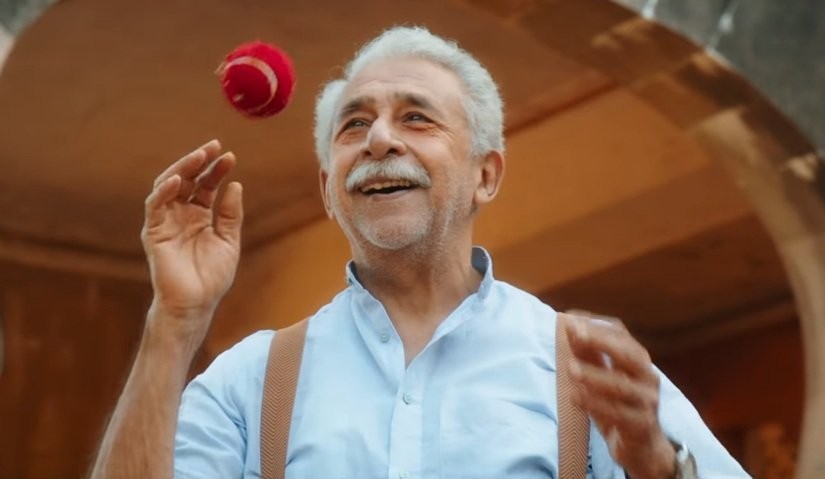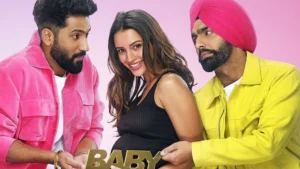
When I think of Hindi family films and the middle class, the obvious names that arise are Basu Chatterjee and Hrishikesh Mukherjee – the doyens from the late ‘60s until the late ‘80s who lent personality and cinematic qualities to this large strata. Their films – as if in tandem – seldom came with artifice except for the lip sync musical numbers which were quite a thing in the era. As debutant Sudip Bandyopadhyay’s Hope Aur Hum began taking shape, I couldn’t resist but think about these greats. The filmmaker intends to chronicle a family’s routine existence and create drama out of everyday mundaneness. This peculiar zone that combines feel-good in a life-like setting no longer exists, even on a small-scale basis in Hindi cinema. Hope Aur Hum belongs to the bracket of films which do not threaten to overpower you with monumental twists and scheming villains but comes with a sweeping message.
For a large part of the film’s runtime, I had a tough time in fathoming how Bandyopadhyay and team could come up with this absolutely uncreative title. Sorry, the film isn’t half as bad as how they want to call it. It is akin to choosing ‘Khana aur Mohabbat’ instead of Daawat-e-Ishq. Or worse, Sultan being ‘Kushti aur Parivaar’. I mean, duh! You do come to terms with it because the film has its moments to make you feel fuzzy inside. The story about a middle-class family settled in what is shown to be Mumbai’s Gorai suburb, Hope Aur Hum runs in three parallels – those of different generations. The most intriguing out of all is that of the family’s youngest member Anu (Kabir Sajid). A voracious cricket fanatic, the little guy’s life takes a massive during a chance visit to his grandmother’s mansion. The only hiccup here is that Anu, like several filmy children, has a tendency to take the adult route. His performance, dialogue delivery, body language and even routine postures seem tad bit orchestrated. This is not to say that he is a bad actor per se, but the flavour of ‘chhoti mooh mein badi baat’ runs throughout the first half. Still, call it Sajid’s inherent honesty or Bandhyopadhyay’s thoughtful (though not fool proof) writing holds his chapter together.
On a different tangent, Anu’s grandfather Nagesh Srivastava (Naseeruddin Shah) is caught in a desi-Her like situation. His attachment to the home’s (which doubles up a shop) photocopier machine is intense. The family loves the machine as a person and also addresses it as one. Nagesh’s daughter-in-lawAditi (Sonali Kulkarni) is the only one who feels slightly disconnected to the whole affection. This is a nice writerly touch since she is the only one in the family who didn’t grow up with the machine. The episode, albeit redundant with a notable lack of drama, knits nicely to the screenplay and is spearheaded ably by Shah’s assured performance. Towards the end of the film, he even delivers a knockout solo moment which might as well be the film’s finest.
The weakest track out of all is that of the Nitin (Navin Kasturia) who is Srivastava family’s flagbearer of “I am not ready for marriage yet” theory. Call it the writers’ inability to understand the generation’s psyche or the track’s reliance on excess contrivances, Nitin’s characterization falls flat right from the outset, despite the actor pitching in a neat act. Be it his uneasiness over losing his phone or the pointless neighbourhood friendship that the film veers into, there’s pretty much no purpose in the way his story meanders. Nevertheless, it was a pleasant surprise spotting the talented Neha Chouhan (of G Kutta Se fame) in a cameo.
Upon considering what impressed me in Hope Aur Hum, it is primarily the immediate setting of a routine family. The writing takes a 360-degree turn when the narrative shifts to a remote village where Aditi’s mother owns a large mansion. The location sets in the much-needed element of eeriness although questionable if the decision was a little forced. There are needless tracks of the little Anu being enamoured by Brazilian jazz, prose-heavy books on crickets et al, reinforcing his adult-like characterization. Interestingly enough, the guy turns all inquisitive and stubborn in the very next sequence.
Bandhyopadhyay’s backdrop in Mumbai, on the other hand, faces a hiccup on the production design front where outdoors looks way too done up. This is compensated significantly by artful cinematography (Ravi K Chandran) and Shivan Panicker’s editing, yet the atmosphere never really soars to an extent of significant impact. Performances are uniform throughout with the principal cast delivering relatable performances. In comparison, Sonali Kulkarni is wasted in a role that plays to the standard housewife stereotype. Aamir Bashir is well-cast in a relatively low-key part with a couple of moments to shine. Original score by Rupert Fernandes is lilting with some impressive guitar strums throughout. However, the occasional song bits are distracting.
As the show concluded, it did yield me a hint of the famous ‘feel-good’ factor. While the people, the mood and the backdrop seem largely distant despite their constant endeavour to tug your heartstrings, there are several individual scenes to smile at. You know, this is that film where the loving middle-class patriarch is impeccably dressed (he wears suspenders, alright) but also adheres strictly to film’s well-meaning message which could be diabetic to him and the viewers alike.
Rating: ★★ 1/2

